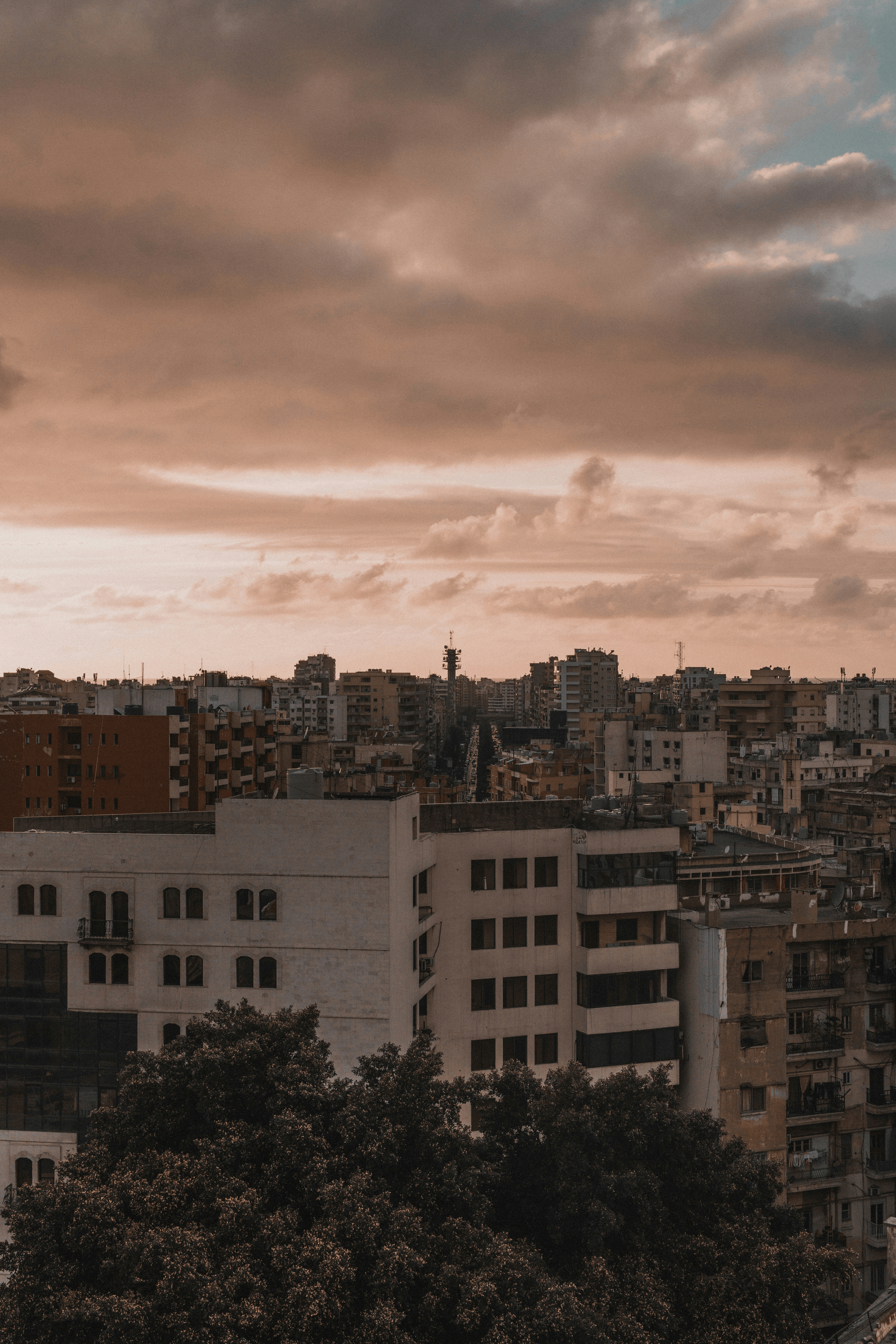Introduction
In a world where safety concerns are ever-increasing, understanding the importance of protective infrastructure has never been more crucial. The rise of blast resistant buildings reflects a proactive approach to safeguarding both lives and property from potential threats. These structures are not just about resilience; they embody a commitment to safety in an unpredictable environment.
Understanding the Importance of Safety
Safety is paramount in today's society, where various risks loom large over commercial and government facilities alike. From natural disasters to man-made threats, the need for robust security measures has propelled the development of blast resistant buildings into the spotlight. By prioritizing safety, organizations can protect their assets and ensure peace of mind for employees and stakeholders.
The Rise of Blast Resistant Buildings
The emergence of blast resistant buildings marks a significant shift in architectural design philosophy, integrating advanced materials and innovative engineering techniques. As threats evolve, so too must our infrastructure; thus, these specialized structures have gained popularity across various sectors. Companies like PreFab Inc. are at the forefront of this revolution, providing cutting-edge designs that meet contemporary safety demands.
Key Features of Modern Facilities
Modern blast resistant buildings boast several key features designed to withstand explosive forces while ensuring occupant safety. Reinforced walls, specialized glazing systems, and strategic layout designs all contribute to their effectiveness against blasts. Additionally, these facilities often incorporate sustainable practices that enhance their overall efficiency without compromising on security—an essential balance in today’s construction landscape.
What are Blast Resistant Buildings?

Blast resistant buildings are specially designed structures engineered to withstand explosive forces and protect occupants from potential threats. These facilities utilize advanced materials and construction techniques to absorb shockwaves, reduce damage, and ensure safety during an explosion. The primary purpose of blast resistant buildings is to minimize risks associated with bomb blasts, industrial accidents, or other catastrophic events while maintaining functionality.
Definition and Purpose of Blast Resistant Buildings
At their core, blast resistant buildings serve a crucial role in safeguarding lives and assets against the devastating effects of explosions. These structures are meticulously designed with reinforced walls, specialized windows, and strategic layouts that help deflect or absorb explosive energy. By prioritizing safety through innovative architecture, blast resistant buildings not only protect individuals but also enhance the resilience of communities at large.
Historical Context and Evolution
The concept of blast resistant buildings dates back to military needs during wartime when protecting soldiers and critical infrastructure became paramount. Over the decades, advancements in engineering led to more sophisticated designs that integrated lessons learned from past incidents. Today’s blast resistant buildings reflect a rich history of innovation driven by necessity, evolving from basic fortifications into modern marvels crafted by firms like PreFab Inc., which specialize in cutting-edge construction methods tailored for security.
Current Trends in Design and Materials
Modern trends in the design of blast resistant buildings emphasize both functionality and aesthetics without compromising safety standards. Engineers are now using high-performance materials such as fiber-reinforced composites that offer superior strength while being lightweight—ideal for minimizing structural load without sacrificing durability. Furthermore, sustainable practices are gaining traction; eco-friendly materials are increasingly incorporated into designs for blast resistant buildings, aligning safety with environmental responsibility as we look towards a greener future.
Benefits for Commercial and Government Facilities

When it comes to the safety of commercial and government facilities, blast resistant buildings are becoming a non-negotiable asset. The need for enhanced security in an increasingly unpredictable world has led to a surge in their adoption. Not only do these structures provide robust protection against potential threats, but they also come with a host of other benefits that make them worth the investment.
Enhanced Security and Protection
One of the most compelling advantages of blast resistant buildings is their ability to significantly enhance security and protection. These structures are engineered to withstand explosive forces, ensuring that occupants remain safe even in the event of an attack or accident. With features such as reinforced walls and specialized glazing, blast resistant buildings minimize damage and protect vital assets, creating a safer environment for employees and visitors alike.
Moreover, organizations like PreFab Inc. specialize in designing tailored solutions that meet specific safety needs while maintaining aesthetic appeal. This means that you don’t have to sacrifice style for safety; modern designs can seamlessly blend into urban landscapes while providing maximum protection. Enhanced security not only safeguards lives but also boosts employee morale by creating a sense of safety within the workplace.
Cost-Effectiveness in the Long Run
While there may be an upfront investment associated with constructing blast resistant buildings, these costs are often offset by long-term savings. Facilities designed with blast resistance in mind tend to incur fewer repair expenses after incidents compared to standard buildings that lack such fortifications. Over time, this translates into significant savings on insurance premiums as well since many insurers recognize the reduced risk associated with these specialized structures.
Additionally, investing in durable materials from companies like PreFab Inc., which focus on advanced construction techniques, can lead to lower maintenance costs over the lifespan of the building. The initial cost may be higher than traditional construction methods; however, when you factor in reduced operational disruptions due to damage or repairs, it becomes clear that blast resistant buildings offer exceptional value over time. Ultimately, prioritizing safety through smart investments pays off both financially and operationally.
Compliance with Safety Regulations
In today’s regulatory environment, compliance with safety regulations is paramount for commercial and government facilities alike. Blast resistant buildings not only help organizations meet existing legal requirements but also position them favorably for future regulations as they evolve over time. By proactively adopting designs that prioritize safety features, companies can avoid costly fines or legal repercussions down the line.
Moreover, adhering to stringent building codes enhances public trust—an essential element for any organization aiming to build strong community relationships. With PreFab Inc.'s expertise in developing compliant structures tailored specifically for various industries, businesses can confidently navigate complex regulatory landscapes without compromising on design or functionality. In essence, choosing blast resistant solutions ensures peace of mind while fostering a culture of responsibility towards employee welfare and community safety.
Popular Applications of Blast Resistant Buildings

Blast resistant buildings have carved out essential roles across various sectors, providing enhanced safety and security in environments where risks are heightened. Their unique design and construction techniques make them ideal for protecting both people and assets from explosive threats. Let's explore some of the most prominent applications of these robust structures.
Military Facilities and Defense Operations
Military facilities are at the forefront of utilizing blast resistant buildings due to their critical need for security against potential attacks. These structures are specifically engineered to withstand explosions, ensuring that personnel can operate safely even in hostile environments. Companies like PreFab Inc. specialize in designing military installations that prioritize durability while also accommodating advanced operational needs.
The strategic placement of blast resistant buildings within military bases helps minimize damage during an attack, safeguarding both equipment and lives. With ongoing advancements in materials and engineering, these facilities can now incorporate sophisticated technologies that enhance their protective capabilities further. As threats evolve, so too does the necessity for innovative solutions in military architecture.
Emergency Response and Government Buildings
Emergency response centers require blast resistant buildings to ensure they remain operational during crises such as natural disasters or terrorist attacks. These facilities serve as command hubs where critical decisions are made, making their integrity paramount for public safety. By investing in blast resistant designs, governments can provide first responders with a secure environment to effectively coordinate rescue operations.
Moreover, government buildings housing sensitive information or high-profile officials benefit significantly from enhanced security features found in blast resistant constructions. The ability to withstand blasts not only protects physical assets but also instills confidence among citizens regarding their safety during emergencies. PreFab Inc.'s expertise in creating resilient government infrastructures plays a vital role in fostering community trust.
Industrial Sites and Chemical Plants
Industrial sites and chemical plants present unique challenges when it comes to safety due to the hazardous materials they often handle. Implementing blast resistant buildings at these locations mitigates risks associated with explosions or chemical spills, protecting employees and surrounding communities alike. The investment into such infrastructure is not just about compliance; it's about prioritizing human life over costs.
In addition to safeguarding personnel, these structures help maintain operational continuity by minimizing downtime after incidents occur. Companies like PreFab Inc., known for their cutting-edge designs, ensure that industrial facilities can function smoothly even under adverse conditions while adhering to stringent safety regulations. The proactive approach toward building resilience ultimately leads to more sustainable industrial operations.
Innovative Technologies in Blast Resistance

As the world becomes increasingly aware of the need for safety and security, innovative technologies in blast resistance are taking center stage. These advancements not only enhance the effectiveness of blast resistant buildings but also revolutionize how we approach construction and design. By integrating cutting-edge materials and techniques, facilities can now better withstand potential threats while maintaining functionality and aesthetic appeal.
Advanced Materials and Construction Techniques
In the realm of blast resistant buildings, advanced materials are game-changers. High-performance concrete, reinforced steel, and composite materials are engineered to absorb energy from explosions, minimizing structural damage and protecting occupants. Moreover, modern construction techniques such as modular building systems allow for rapid deployment without sacrificing safety standards—making it easier to build secure structures quickly.
The use of these advanced materials doesn't just enhance resilience; it also opens up new possibilities for architectural design. For instance, engineers can create sleek, modern aesthetics without compromising on safety features. This marriage of form and function is crucial as more organizations recognize that blast resistant buildings can be both beautiful and secure.
Role of Engineering Firms like PreFab Inc.
Engineering firms like PreFab Inc. are at the forefront of developing innovative solutions in blast resistance technology. With a focus on research-driven designs, these firms tailor their approaches to meet specific client needs while adhering to stringent safety regulations. By leveraging their expertise in advanced materials and construction methods, they ensure that each project results in robust blast resistant buildings capable of withstanding various threats.
Collaboration is another key aspect where firms like PreFab Inc. shine; they work closely with architects, builders, and safety experts to create comprehensive strategies for facility protection. This team effort fosters an environment where ideas flourish—leading to groundbreaking advancements in both design efficiency and structural integrity for blast resistant buildings across multiple sectors.
Future of Blast Resistant Infrastructure
Looking ahead, the future of blast resistant infrastructure holds exciting possibilities fueled by technological advancements and evolving threats. As urban environments expand and become more complex, the demand for innovative solutions will only grow stronger—pushing engineers to continuously refine their designs for enhanced security measures within blast resistant buildings.
Emerging technologies such as artificial intelligence (AI) may play a pivotal role in predicting potential risks associated with various locations or structures over time. Additionally, sustainable practices will likely become integral to developing these facilities; using eco-friendly materials could redefine how we think about resilience without compromising environmental responsibility.
In summary, as innovations continue to reshape the landscape of safety architecture through advanced materials and engineering expertise from companies like PreFab Inc., we can expect a future where blast resistant buildings not only protect lives but also contribute positively to our communities' aesthetics and sustainability goals.
Real-World Case Studies

Exploring real-world applications of blast resistant buildings provides valuable insights into their effectiveness and adaptability. These case studies not only showcase innovative designs but also highlight the lessons learned from their implementation. By examining these examples, we can better understand the impact of such structures on safety and resilience in various environments.
Notable Examples of Blast Resistant Buildings
One of the most renowned examples of blast resistant buildings is the U.S. Embassy in Baghdad, Iraq. Constructed with advanced materials and design techniques, this facility is designed to withstand explosive threats while providing a secure environment for diplomatic operations. Another notable case is the Federal Bureau of Investigation (FBI) headquarters in Washington, D.C., which incorporates state-of-the-art blast resistance features to protect sensitive information and personnel.
In addition to government buildings, industrial sites like chemical plants have also adopted blast resistant designs. For instance, a major petrochemical facility in Texas utilized specialized construction methods to enhance its resilience against potential explosions or attacks. These examples illustrate how diverse sectors are increasingly investing in blast resistant buildings to safeguard their operations and personnel.
Lessons Learned from Implementations
The implementation of blast resistant buildings has taught us several key lessons about safety and design principles. Firstly, early involvement of engineering firms like PreFab Inc. can significantly improve project outcomes by integrating advanced technologies from the outset. This proactive approach not only enhances security but also streamlines construction processes.
Secondly, flexibility in design allows for modifications that accommodate specific site conditions or operational needs without compromising safety standards. This adaptability has proven essential as threats evolve over time, ensuring that facilities remain effective against new risks associated with modern-day challenges.
Lastly, ongoing training and awareness programs are crucial for personnel working within these facilities. Understanding the unique features and emergency protocols associated with blast resistant buildings can significantly enhance overall safety culture within organizations.
Impact on Community Safety and Resilience
The presence of blast resistant buildings contributes positively to community safety by creating secure environments that deter potential threats while promoting public confidence. When communities invest in such facilities—be it military installations or critical infrastructure—they cultivate a culture of preparedness that extends beyond individual structures.
Moreover, these resilient designs often serve as models for urban planning initiatives aimed at enhancing overall safety measures across neighborhoods or cities. By prioritizing robust construction practices like those seen at PreFab Inc., communities can better withstand adverse events while minimizing damage during emergencies.
Finally, as more organizations adopt blast resistant solutions, there’s a ripple effect that encourages collaboration among local governments and businesses toward shared security goals—ultimately fostering safer environments for everyone involved.
Conclusion

In a world where safety is paramount, the evolution of urban infrastructure has led to innovative solutions like blast resistant buildings. These structures not only protect against potential threats but also represent a forward-thinking approach to urban design and safety. As cities continue to grow and face new challenges, investing in such resilient solutions will be crucial for community well-being.
The Future of Urban Safety Innovations
The future of urban safety innovations is bright, particularly with the advancement of blast resistant buildings. As technology evolves, we can expect even more sophisticated materials and designs that enhance structural integrity while remaining cost-effective. Companies like PreFab Inc. are at the forefront of this movement, ensuring that modern facilities meet the highest standards of safety and resilience.
Why Invest in Blast Resistant Solutions
Investing in blast resistant buildings is not just about immediate security; it's a long-term strategy for safeguarding assets and lives alike. The benefits extend beyond mere protection; they include compliance with stringent regulations and potential insurance savings over time. Ultimately, organizations recognize that prioritizing safety through thoughtful investment fosters trust within communities and among stakeholders.
Final Thoughts on Security and Protection
In an unpredictable world, the importance of security cannot be overstated, making blast resistant buildings an essential consideration for both commercial and government facilities. As we look toward the future, embracing innovative designs will help ensure our cities remain safe havens for all residents. With companies like PreFab Inc., we are not just building structures; we are crafting secure environments that prioritize human life above all else.

